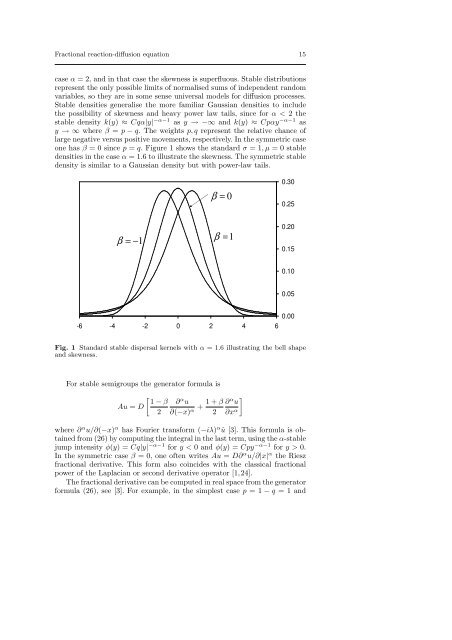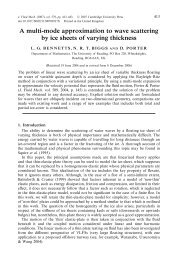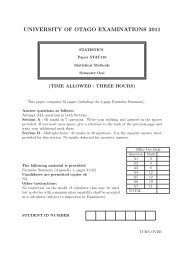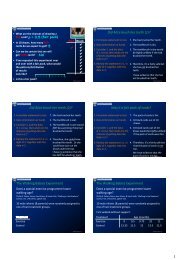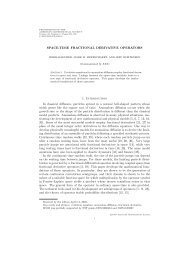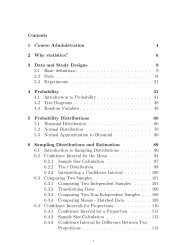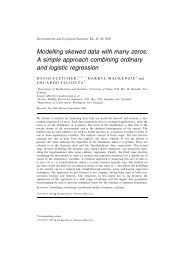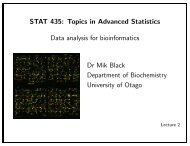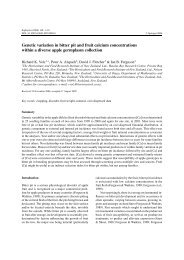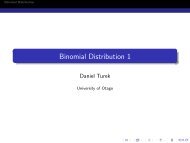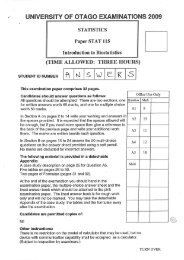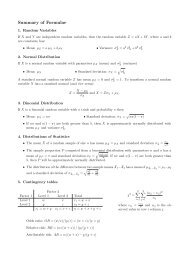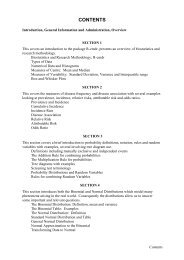Fractional reaction-diffusion equation for species ... - ResearchGate
Fractional reaction-diffusion equation for species ... - ResearchGate
Fractional reaction-diffusion equation for species ... - ResearchGate
You also want an ePaper? Increase the reach of your titles
YUMPU automatically turns print PDFs into web optimized ePapers that Google loves.
<strong>Fractional</strong> <strong>reaction</strong>-<strong>diffusion</strong> <strong>equation</strong> 15<br />
case α = 2, and in that case the skewness is superfluous. Stable distributions<br />
represent the only possible limits of normalised sums of independent random<br />
variables, so they are in some sense universal models <strong>for</strong> <strong>diffusion</strong> processes.<br />
Stable densities generalise the more familiar Gaussian densities to include<br />
the possibility of skewness and heavy power law tails, since <strong>for</strong> α < 2 the<br />
stable density k(y) ≈ Cqα|y| −α−1 as y → −∞ and k(y) ≈ Cpαy −α−1 as<br />
y → ∞ where β = p − q. The weights p, q represent the relative chance of<br />
large negative versus positive movements, respectively. In the symmetric case<br />
one has β = 0 since p = q. Figure 1 shows the standard σ = 1, µ = 0 stable<br />
densities in the case α = 1.6 to illustrate the skewness. The symmetric stable<br />
density is similar to a Gaussian density but with power-law tails.<br />
β = 0<br />
0.30<br />
0.25<br />
β = −1<br />
β =1<br />
0.20<br />
0.15<br />
0.10<br />
0.05<br />
-6 -4 -2 0 2 4 6<br />
0.00<br />
Fig. 1 Standard stable dispersal kernels with α = 1.6 illustrating the bell shape<br />
and skewness.<br />
For stable semigroups the generator <strong>for</strong>mula is<br />
[ 1 − β ∂ α u<br />
Au = D<br />
2 ∂(−x) α + 1 + β ∂ α ]<br />
u<br />
2 ∂x α<br />
where ∂ α u/∂(−x) α has Fourier trans<strong>for</strong>m (−iλ) α û [3]. This <strong>for</strong>mula is obtained<br />
from (26) by computing the integral in the last term, using the α-stable<br />
jump intensity φ(y) = Cq|y| −α−1 <strong>for</strong> y < 0 and φ(y) = Cpy −α−1 <strong>for</strong> y > 0.<br />
In the symmetric case β = 0, one often writes Au = D∂ α u/∂|x| α the Riesz<br />
fractional derivative. This <strong>for</strong>m also coincides with the classical fractional<br />
power of the Laplacian or second derivative operator [1,24].<br />
The fractional derivative can be computed in real space from the generator<br />
<strong>for</strong>mula (26), see [3]. For example, in the simplest case p = 1 − q = 1 and


